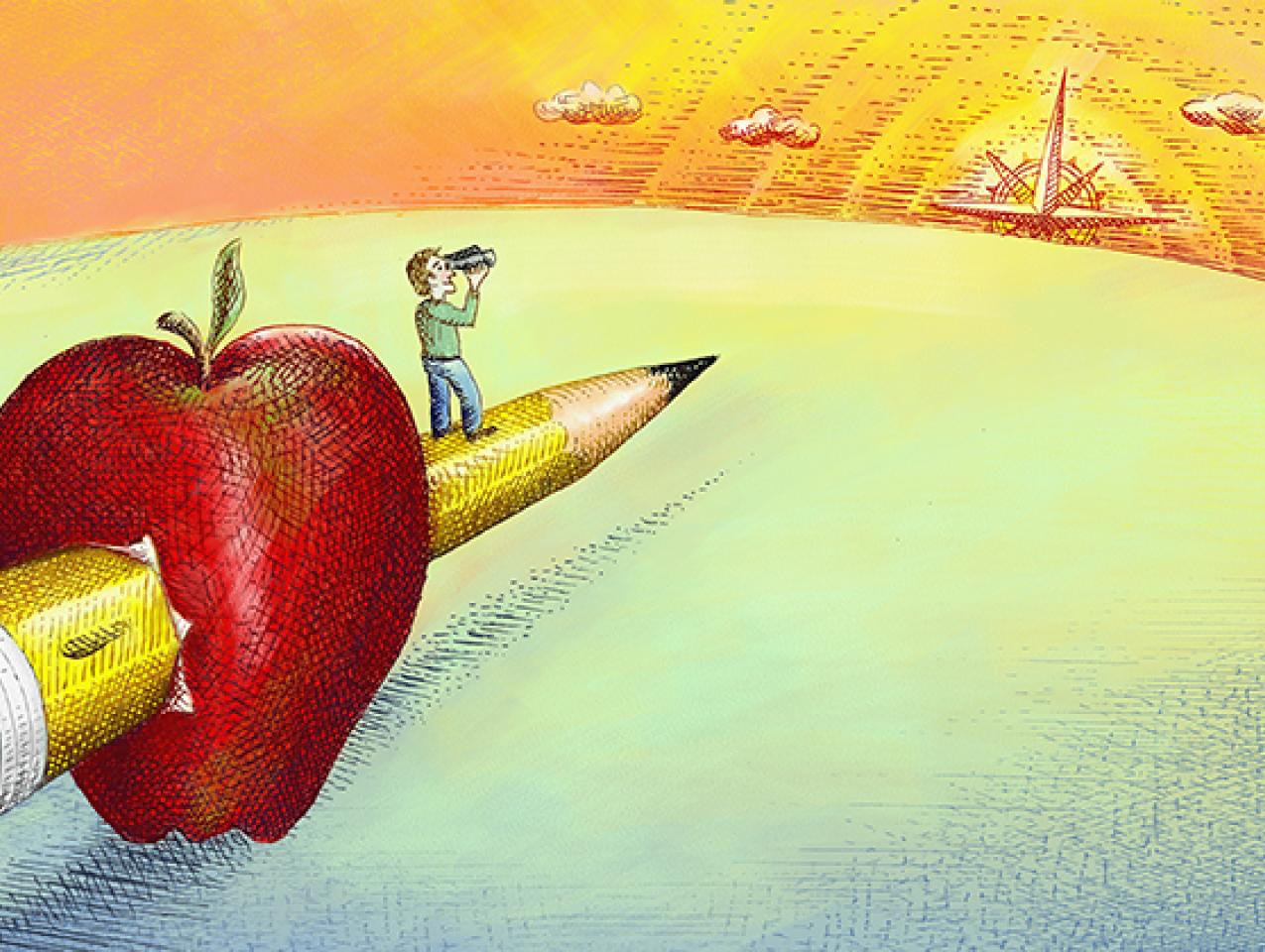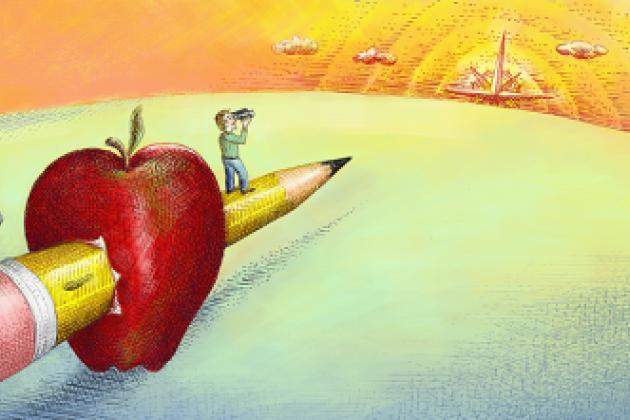- Politics, Institutions, and Public Opinion
Editor’s note: A shorter version of this essay appeared in the Wall Street Journal in August.
The National Park Service (NPS) is celebrating its 100th birthday. There is hardly a federal agency that commands more widespread support than the NPS. A 2015 Gallup poll asked if the public was satisfied with the government’s handling of “national parks and open spaces,” and 64 percent said yes, despite the fact that voters generally are dissatisfied with the federal government.
One indicator of just how much the public and politicians support national parks is the number of new parks created by nearly every Congress, often referred to as “Park Barrel Politics.” Today, there are 84 million acres in the national park system, including 59 national parks, 20 of which have been added since 1980, and 84 national monuments, bringing the total number of such public spaces to 412. No doubt this number will increase significantly before year’s end as President Obama adds more monuments through the Antiquities Act, which allows the president to do so unilaterally without Congressional approval.
Loved as they are, however, our national parks and monuments are not being well treated—and adding more to the inventory will only make matters worse. Each year the NPS begs Congress for more funding, but operating budgets always fall short of requests. Between 2005 and 2015, the federal budget grew by 39 percent as the NPS operating budget grew by only 1.7 percent. Meanwhile park visitation increased to a record 305 million in 2015.
An even bigger problem is the $12 billion maintenance backlog. In other words even when Congress appropriates money for operations, the infrastructure—including crumbling roads, leaking sewers, and deteriorating buildings, some of which are historical sites—continues to deteriorate.
The 100th anniversary of the NPS is a good time to rethink how we manage and fund our national parks. Considering the history of why national parks were created and how they were operated, we can give the NPS an anniversary gift by going “back to the future” to make parks more self-sufficient.
If you ask most people whose idea it was to create national parks, they are likely to say Teddy Roosevelt. In fact, Congress created Yellowstone in 1872, when Teddy was only 14 years old. Moreover, the impetus to establish Yellowstone did not come from a farsighted politician or a group of environmentalists sitting around a campfire, but from transcontinental railroad barons who saw a natural treasure that people would pay to visit. In particular, Jay Cooke of the Northern Pacific Railway saw profits in carrying passengers to Yellowstone, which was only 60 miles from its mainline. In lobbying Congress to establish the first national park, a railroad official emphasized that
We do not want to see the Falls of the Yellowstone driving the looms of a cotton factory, or the great geysers boiling pork for some gigantic packinghouse, but in all the native majesty and grandeur in which they appear today, without, as yet, a single trace of that adornment which is desecration, that improvement which is equivalent to ruin, or that utilization which means utter destruction.
Other national parks including Yosemite, Mount Rainier, Crater Lake, Glacier, and Rocky Mountain were established before the NPS was created in 1916, each with a railroad as its benefactor. Not only did railroads pressure Congress to create parks, but they also built magnificent hotels, roads, and other infrastructure, staffed parks with wardens to guard against wildlife poaching, and stopped the constructions of baths in Yellowstone’s hot waters.
In light of this history, it is not so surprising that NPS Director Jonathan Jarvis earlier this year proposed recognition of corporate donations by allowing the donors to put their names on everything from dumpsters to buildings. The response, however, suggests that the public does not understand the importance of finding alternative funding sources for national parks. A Washington Post headline read “Yosemite, sponsored by Starbucks?” Or, as Jeff Rauch, director of the Public Employees for Environmental Responsibility, put it, “You could use Old Faithful to pitch Viagra” or “Victoria’s Secret to plug the Statute of Liberty.”
If not corporate sponsorship, then the NPS should charge more realistic entrance fees. Initially parks were to be self-supporting and revenue from entrance fees was seen as the way to make this a reality. Yosemite, for example, made a profit in 1907, and Yellowstone’s receipts exceeded expenditures in 1915 and 1916. Revenues from entrance fees prompted Mount Rainier’s superintendent to predict in 1914 that “park revenues will be sufficient to meet the expenses of an economical administration of park affairs.” In the 1917 annual report of the National Park Service, Acting Director Horace M. Albright was equally optimistic: “I believe the time will soon come when Yellowstone, Yosemite, Mount Rainier, Sequoia, and General Grant National Parks and probably one or two more members of the system will yield sufficient revenue to cover costs of administration and maintenance of improvements.”
Entry fees in the early years when automobiles were first allowed into national parks reflected the value of these natural treasures to those who visited them. Mount Rainier, the first to allow cars in 1908, sold 1,594 auto permits at a price in 2016 dollars of $475. In 1916, the seasonal price of auto permits in 2016 dollars ranged from $120 at Glacier and Mesa Verde to $240 at Yellowstone. By 1921, total auto receipts throughout the system were $3 million in today’s dollars. By comparison, the entrance fee today for Yellowstone is $30 for a car for 7 days.
During the early years, receipts were held in a special treasury account and could be expended directly for park development and administration without congressional appropriation. In 1917, Stephen T. Mather, responsible for the national parks as special assistant to the Secretary of the Interior and subsequently director of the NPS, saw this income as a way of gaining full control over the parks.
Not surprisingly, Congress wielded its power in 1918 by requiring that all park receipts be turned in to the general Treasury. Since then, the NPS has had to grovel at the feet of Congress or solicit private support from non-government sources, such as the National Parks Foundation, to make ends meet. As economist Holly Fretwell notes, “Managers came to view the collection of fees as a nuisance and resented spending appropriated funds on fee collection rather than valuable park resources.”
Some progress was made in going “back to the future” for park funding starting in 1996 when Congress authorized the Fee Demonstration Program allowing agencies such as the NPS to charge user fees and retain some of what they collected. This idea was extended for 10 years in 2004 with the Federal Lands Recreation Enhancement Act. Though Congress has not extended the act, national parks continue to collect user fees for certain activities such as entrance to parks, camping, and fishing with up to 80 percent of the fees collected retained by the park where they are collected. Revenue generated for each park varies considerably. For example, fees as a percentage of operating costs hover around 5 percent at Olympic National Park but almost 50 percent at the Grand Canyon.
The potential for going all the way back to a system of entrance fees to support national park operating budgets begs the question: what would entrance fees per visitor have to be to make parks self-sufficient? The simple answer is—not very much! For example, with 4 million visitors in 2015, Yellowstone could cover its operating budget with a fee of $10.95 per visitor day. This means that a family of four would pay $44 per day—less than a trip to the movies or a day at Disney World where the entrance fee is over $100. In contrast, Great Smokey Mountains had a somewhat lower budget but more than 10 million annual visitors so it could have gotten by on $2 per visitors. Glacier National Park could have covered its 2015 costs with a charge of $7.19 per person; Grand Canyon, $7.63; and Grand Teton, $6.40.
Suppose, further, that national parks charged differential fees. A discount might be provided for children under 12, but lower revenues could easily be covered by higher fees for foreign visitors who pay no taxes to the U.S. Treasury. Such differential pricing is common in parks outside the United States. For example, Kenya’s Maasai Mara National Reserve charges its citizens $10 compared to $70 for non-citizens. The percentage of foreign visitors to U.S. parks varies widely, with Zion and Yosemite having as much as 25 percent foreign visitors in 2006 and 2009, respectively, Yellowstone having 12 percent in 2011, and Rocky Mountain having less than 1 percent in 2011. Given that foreign visitors who have paid a considerable amount in travel to visit the parks and are likely wealthier than the average visitor or taxpayer, it is unlikely that they would bat an eye at adult fees of $100 per person, thus giving national parks a considerable budgetary boost.
Congress is already working on yet another simple budget fix. The National Park Service Centennial Act, presented by Congress earlier this year, calls for raising the price of a senior citizen lifetime pass from a mere $10 to $80—the price of a regular annual national park pass. No doubt this proposal will get a backlash from the AARP, but if the NPS sold 600,000 senior passes, as it did in 2015, at $80, it would generate an additional $42 million for operating costs or maintenance.
If we love our parks as much as we say we do, the centennial celebration of the National Park Service is a perfect occasion to take parks out of politics and give them the gift of operating budgetary autonomy. Of course, the infrastructure backlog that already plagues national parks will remain for Congress to solve, and finding a solution in light of ever growing deficits will not be easy. Critics may argue that freeing the NPS from politics will not remove problems associated with large bureaucracies, but fiscal accountability through user fees will better connect the NPS bureaucracy with its customer base and change its focus from Washington to “America’s best idea.” Of course, this is precisely why politicians are unlikely to support such a common sense idea.
















